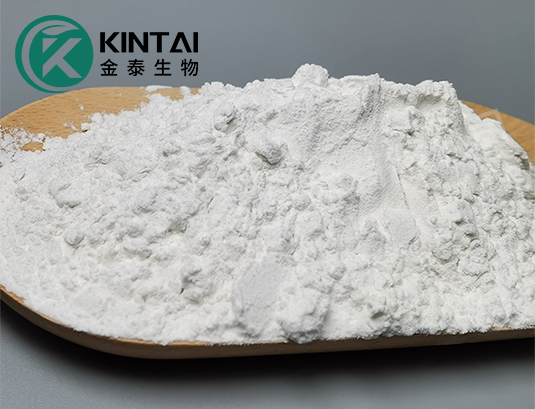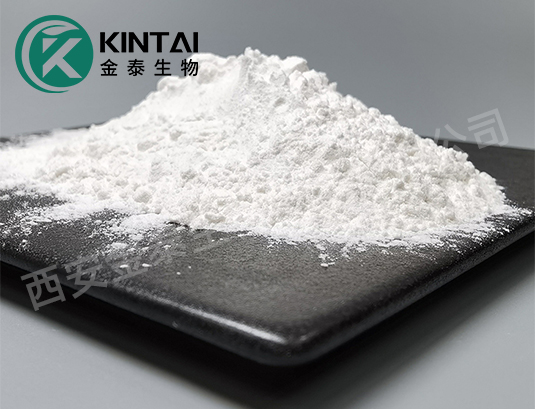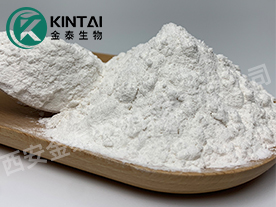- 86-133 4743 6038
- cheney@kintaibio.com

Magnolia officinalis extract: magnolol 98%
[Product name]: Magnolia officinalis extract: honokiol 98%
[English name]: honokiol
[Product specification]: honokiol 98%
[Appearance]: off white fine powder
[Product particle size]: 95% passing 80 meshes
[Extraction source]: thousand dried bark, branch bark and root bark of Magnolia officinalis.
[Detection method]: HPLC ≥ 98%

Andrographis paniculata extract: andrographolide 98%

White birch bark extract:Betulin 98%

Lappaconitine hydrobromide
[Product Overview]
Magnolia officinalis subsp Officinalis and Magnolia officinalis subsp There are two kinds of biloba, mainly produced in Sichuan, Hubei and other places. The traditional Chinese medicine refers specifically to the dried bark, root bark and branch bark of the plant. From April to June, peel off the root bark and branch bark and dry them in the shade. Put the dried bark in boiling water and slightly boil it before stacking it in a shady and wet place. When the inner surface of the bark is "sweaty" to purple brown or brown, steam it and take it out, roll it into a tube, and dry it. Cut into shreds for ginger.
[Other Name]: 3'5 Di2 propenyl 11 'biphenyl 24' diphenol
[Molecular Formula]: C18H18O2
[Molecular weight]: 266.32
[CAS No.]: 35354-74-6
[Solubility]: soluble in ethanol, propylene glycol and other organic solvents and alkaline aqueous solutions
[Pharmacological properties]: This product is a fine powder from brown to white, fragrant, spicy and slightly bitter. The monomer is colorless scale crystal. The melting point is 87.5 ℃. Polarity ± 0 °. cm-1:3280,1610,1500,882,826。 Soluble in general organic solvents, soluble in benzene, ether, chloroform, ethanol, etc., insoluble in water. In chloroform, it reacts with ferric chloride to form blue. It reacts with ferric chloride methyl alcohol solution and turns blue black. It reacts with Millon reagent and turns brown precipitate. It reacts with phloroglucinol hydrochloric acid solution and turns red precipitate.
[Package specification]: standard package: 25kg/cardboard bucket; Bulk cargo: 1kg/bag
[Production process]: screening raw materials, cleaning raw materials, three times of extraction, purification, spray drying into powder, screening sterilization, packaging.
[Storage conditions]: The product should be sealed and shaded, and stored in a dry, cool and well ventilated place.
[Shelf life]: 24 months
[Application dosage form]: tablets, powders, granules, etc.
[Effect of Magnolia officinalis extract]
Honokiol has obvious and lasting central muscle relaxation, central nervous inhibition, anti-inflammatory, antibacterial, antigenic microorganisms, anti ulcer, anti-oxidation, anti-aging, anti-tumor, cholesterol lowering and other pharmacological effects, and is used to treat acute enteritis, bacterial or amebic dysentery Chronic gastritis, etc. Among them, in terms of antibacterial effect, magnolol has significant antibacterial activity against gram-positive bacteria, acid resistant bacteria and filamentous fungi, more significant antibacterial effect against Streptococcus mutans, and the strongest inhibitory effect on Staphylococcus. Clinically, it is mainly used to eliminate fullness of chest and abdomen, calm central nerves, relax athletes' muscles, antifungal, anti ulcer and other drugs. In addition, new uses of honokiol can be extended to psychiatric diseases.
[Application of Magnolia officinalis extract]
Magnolia officinalis extract can be widely used in medicine, health products and other industries.
Hotline
+86 133 4743 6038
Email: cheney@kintaibio.com
Skype: cheney213
